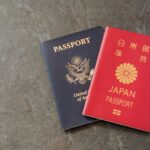Did Einstein help make the atomic bomb?

Did Einstein help make the atomic bomb?
Did Einstein design the atomic bomb?
Einstein’s Signature: Unintended Consequences and Lingering Regret
Introduction
The role of Albert Einstein in the development of the atomic bomb remains a subject of debate and misconception. While Einstein’s renowned equation, E=mc², laid the theoretical foundation for understanding the energy release in an atomic bomb, his actual involvement in the creation of such weapons was minimal. This article aims to clarify Einstein’s contribution, the circumstances surrounding his letter to President Franklin Roosevelt, and the remorse he felt in the aftermath.
Einstein’s Signature on History
In 1939, physicist Leo Szilard drafted a letter addressed to President Roosevelt, warning of the potential for Nazi Germany to develop an atomic bomb. Seeking Einstein’s endorsement due to his authoritative reputation, Szilard obtained Einstein’s signature on the letter. This action marked the extent of Einstein’s direct involvement in the Manhattan Project, the endeavor that ultimately led to the development of atomic bombs by the United States.
Misconceptions and Pacifism
Einstein, known for his pacifist beliefs and activism, was averse to the use of atomic weapons. However, due to his endorsement of the letter, misconceptions arose that he actively participated in the creation of the bomb. These misunderstandings were fueled by the prevailing perception of Einstein as a left-leaning activist, which led to U.S. government restrictions on scientists contacting him during the Manhattan Project.
Einstein’s Reflections and Regret
In hindsight, Einstein expressed regret regarding his decision to sign the letter. Upon learning that Germany was not on the brink of developing an atomic bomb, he regarded the letter as a “big mistake.” In subsequent years, he vocalized his remorse and sought to reconcile his actions by engaging with individuals affected by the bombings.
Visiting Hideki Yukawa and Tears of Apology
In 1949, Einstein visited Hideki Yukawa, the first Japanese Nobel laureate, at his laboratory. Overwhelmed by his emotions, Einstein clasped Yukawa’s hand, tears streaming down his face, and apologized for the innocent lives lost. His heartfelt apology was a reflection of his anguish and guilt over the devastation caused by the atomic bombings of Hiroshima and Nagasaki.
Letters of Sorrow
Einstein’s remorse extended beyond personal interactions. He corresponded with a Japanese philosopher, sharing his deep anguish and regret over the atomic bombings. These letters portrayed a man burdened by the unintended consequences of his own actions, seeking solace and understanding.
Conclusion
While Einstein’s signature on the letter to President Roosevelt played a significant role in catalyzing the Manhattan Project, it is crucial to distinguish between his indirect involvement and his personal convictions. Einstein’s regret and tears demonstrated his genuine remorse for the loss of innocent lives and the devastation caused by the atomic bombings. His experience serves as a poignant reminder of the moral complexities and unforeseen repercussions associated with scientific advancements in times of war.












